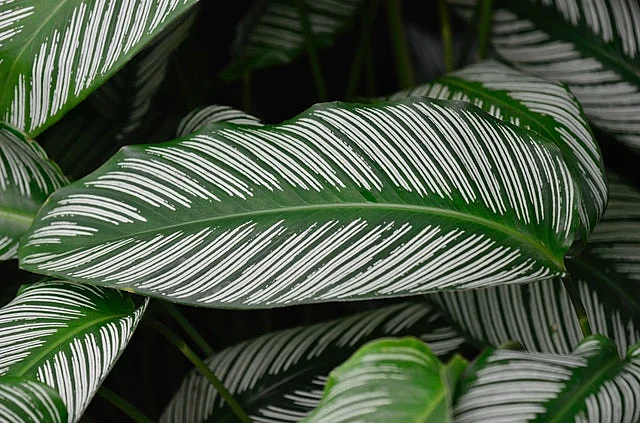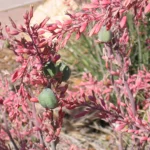Table of Contents
How To Care For Your Maranta Leuconeura
You probably wouldn’t recognize the maranta leuconeura by its given name. But, if you heard ‘Prayer Plant’ you’d probably know what it is. The Prayer Plant is a deep green plant whose leaves respond to night and day.
That is to say, its leaves lift up during the night and spread again during the day to catch the suns rays.
Maranta leuconeura and the prayer plant are one in the same – maranta leuconeura is just the proper name for it (granted, prayer plant is a lot easier to say).
These are such common houseplants because of how easy they are to look after and how oddly they behave at night. But it’s because of this popularity that we’ve put together this little guide for caring for the maranta leuconeura in the proper way.
Not everybody who owns one of these plants is a green-thumb, so following this easy guide will keep your maranta leuconeura healthy and looking fabulous!
What does your maranta leuconeura require?
Light, temperature, soil, and humidity. You get the drill by now. So let’s take a look at what exactly this plant needs for survival!
Light
This plant actually does really well without a lot of direct sunlight. Placing this plant in an area with moderate light would be great. Just make sure the sunlight it receives is indirect so its deep green leaves don’t begin to fade.
Temperature
As a houseplant, the maranta leuconeura is ideally grown at room temperature, so will do well in most homes. So long as the temperature is between 65 and 80 degrees Fahrenheit, this houseplant will be absolutely fine.
Soil
Any good potting soil will work for this plant, because it is notoriously robust and able to withstand most soils.
If you happen to have a soil meter, or feel like picking one up (they are usually relatively cheap and good for using on all soils in the future), then you should look for a pH level of between 5.5 and 6 for the optimum growing conditions.
Humidity
This plant does prefer a more humid environment, and many people have found that growing them in the bathroom is perfect.
If, however, you wish to show off your plant a little more, then you can keep it anywhere in the house so long as it isn’t too close to any heaters, which are notorious for reducing moisture in the air.
Simply mist your plant regularly or place near a humidifier. Better still, place your plant on a tray of damp pebbles which have been about half filled with water.
This creates the necessary moisture and humidity for this particular plant to thrive year round at home.
How to water
During the winter months this plant won’t need watering all that often – just keep an eye on the moisture level of your soil and only water when necessary.
If you water the plant once per week during growing season, you should be alright. Here are the basic steps to follow:
- Overwatering is a problem – only water this plant when the top layer of soil has dried after previously watering.
- Keep soil moist to the touch, but not wet.
- Use soft, distilled, or rainwater as limy water from a tap can be too harsh for the plant and lead to problems.
Keeping the soil less moist in winter is advisable. Just get used to a routine that works for your plant and produces the healthiest looking specimen, and make sure you water it less in winter and it will be fine!
How to fertilize
Finding a well balanced fertilizer specifically designed for houseplants will work great. This plant does require slightly more fertilizing than other species that have been looked at on this blog lately, but it still does not require too much work.
During growing season you should aim to fertilize approximately once every two weeks. Make sure the fertilizer is diluted to around half its strength for best results.
Unlike a lot of plants, the maranta leuconeura does require some fertilizing in winter, but only around once per month. Again, dilute the fertilizer to half its strength here too.
Extra Tips for Maranta Leuconeura Care
The following sections will take you through pest and disease prevention, proper pruning technique, and how to propagate your plant.
These tips will serve you well when caring for this particular houseplant.
Pests and Diseases
Unfortunately a common pest for this plant are mealybugs, and severe infestations can be impossible to remove and will lead to you having to throw your precious plant on the compost pile.
You can try to prevent mealybugs in the first instance by cleaning your plants leaves regularly with a damp cloth.
If you notice mealybugs (small white insects that crawl over the plants leaves) then you can sometimes wipe them away with a cotton bud soaked in alcohol.
This shouldn’t damage your plants leaves as the maranta leuconeura is a pretty tough plant.
In terms of disease, leaf spot is common for those who water the plant overhead. It’s always best to water this particular plant at the base to avoid this disease, as leaf spot is caused when leaves are left wet for too long.
You’ll notice leaf spot by tiny dark spots on the leaves that will eventually lead to them dying and dropping off. You should prune damaged leaves for treatment, or use fungicide if the case is especially bad.
Pruning
Trim the stems back regularly to keep the plants natural shape – twice a year is best. Simply use some sterile scissors and cut at the base of the stem.
Propagation
Take a basal cutting in the spring, approximately 10cm in length. Then simply place your cutting in a well draining compost and water regularly.
This will encourage rooting quickly and your new maranta leuconeura will start to grow!
This article should help you to better understand your maranta leuconeura. Hopefully you’ve found it interesting and will now be able to care of your plant in a much more effective way!
Photo by Yufan Jiang from Pexels



